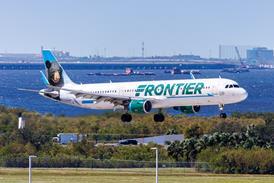The Lockheed Martin F-35 will pass the fourth anniversary of its first flight on 15 December with a test programme surging forward but facing new challenges in 2011, says chief test pilot Jon Beesley.
Set for retirement on 1 February, Beesley has overseen a dramatic expansion of sorties flown in 2010. After completing about 130 sorties in the first three years of flight testing combined, Lockheed expects that seven aircraft representing all three F-35 variants should surpass an unofficial goal of 394 tests this year alone.
As the test fleet finally swells to 14 aircraft by July - a roughly six-month delay - programme officials are preparing to meet fresh problems.
In particular, three aircraft flying with Block 1 software will strain the F-35's thermal management system as never before, Beesley says. The aircraft's electrical and power system radiates heat that must be cooled or dumped into "heat sinks", such as fuel. The challenge is most acute when the F-35 taxis on hot days.
 |
|---|
© Lockheed Martin |
"So far the (F-35's thermal management) concept seems to have worked well," Beesley says, but adds: "When it gets to be 105°F (40.6°C), that's when you want to look at it. It's a great question to ask by the end of next summer and see how did it go."
Another key challenge will be overcoming the "struggling" short take-off and vertical landing F-35B variant. BAE Systems test pilot Graham Tomlinson memorably completed the first vertical landing on 18 March, but such tests have been halted since September after Lockheed found unexpected wear on auxiliary inlet door hinges.
That restriction could be lifted during the week of 13 December, Beesley says, although Lockheed must first "go through a few more wickets" to receive approval from the F-35 joint programme office.
The F-35B is now scheduled to begin vertical landing tests aboard an amphibious carrier in "the fall" of 2011, Beesley says. That means the schedule has slipped by six months since July, when programme officials disclosed the milestone was due in March 2011.
But perhaps the biggest challenge of all will be to sustain the momentum of test sorties per aircraft. The two conventional take-off and landing aircraft currently flying have averaged about 10 sorties per month, Beesley says.
Last June, a senior Lockheed official projected that the total number of test flights would grow from nearly 400 in 2010 to about 1,000 next year. Beesley, however, is non-committal about a goal for flight-test numbers.
"I don't know what the goal is next year," Beesley says. "I very seldom think about number of flights. That might be the most meaningless metric there is."
Source: Flight International























